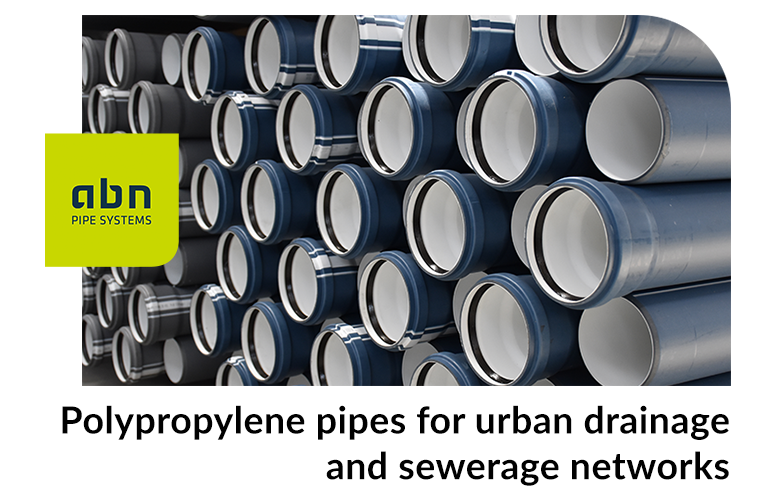The urban drainage and sanitation network plays a key role in promoting public health, environmental protection and the general well-being of our cities. Their proper maintenance and continuous investment in their improvement are essential to ensure their long-term efficiency and sustainability.
In this article, we will look in depth at the advantages of polypropylene pipes for urban drainage and sewerage networks, focusing on their technical characteristics, installation and regulation.
- What are drainage pipes and what are they used for?
- Main materials of drainage pipes
- Benefits of polypropylene pipes for drainage networks
- Which standard applies to PP drainage pipes?
- What is annular stiffness?
- What does the code B and BD mean on an evacuation pipe?
- What does it mean for a pipe to be halogen-free?
- What is soundproof evacuation?
- Method of joining polypropylene sewerage pipes
- Environmental certifications for drainage pipes
- Polypropylene pipes: an efficient solution for drainage networks
What are drainage pipes and what are they used for?
According to the technical building code, all buildings must have adequate means to remove wastewater generated in the building. This is precisely what the network of drainage pipes is responsible for. They carry the water to the outside without causing any nuisance, damp, noise or odour to the occupants of the dwellings. In general, this type of pipes are used for:
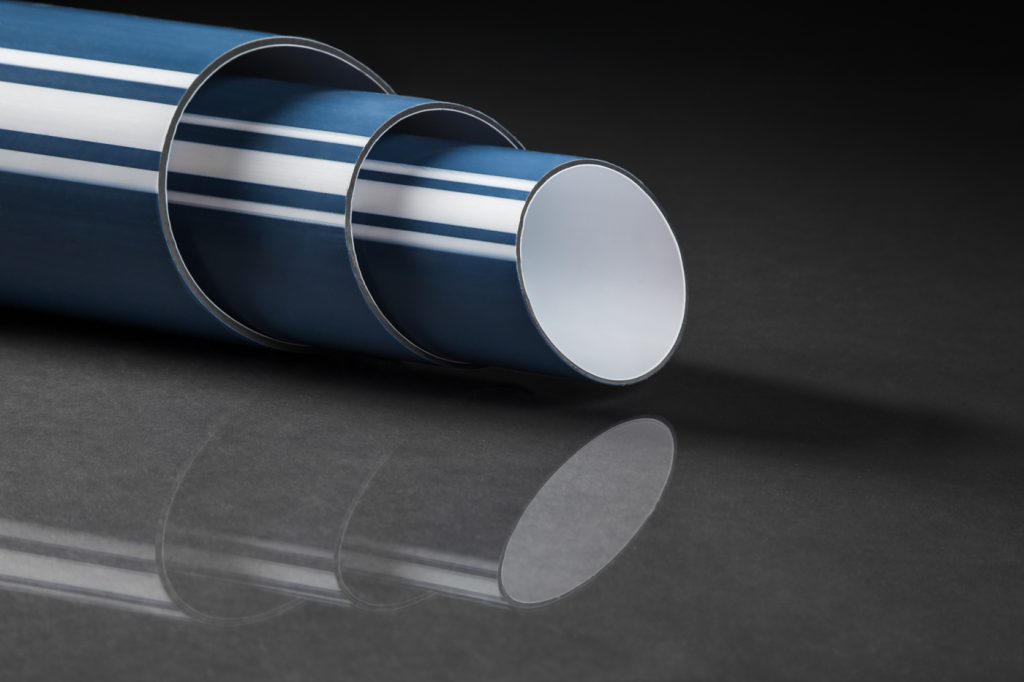
- Rainwater drainage: Rainwater is channelled from the roofs and waterproofed surfaces of buildings into the storm drainage system in the pipe network. This helps prevent flooding and structural damage caused by water accumulation on roofs and surrounding areas.
- Sewage disposal: Sewage pipes carry wastewater, such as from toilets, sinks, showers and other drains, from inside the building to the municipal sewerage system or to a wastewater treatment system in the case of stand-alone systems, such as septic tanks.
- Low and high temperature wastewater disposal: Due to their temperature resistance, PP pipes are suitable for high and low temperature wastewater disposal in laboratories, laundries, kitchens, kitchens, autoclaves and industrial drains.
Main materials of drainage pipes
The most widely used plastic drainage and sewerage pipe is polyvinyl chloride, also known as PVC, which has been used in both above and below ground systems for more than 60 years. However, polypropylene (PP) is currently the best material to use for a wastewater and rainwater drainage network, thanks to its particular technical characteristics and its recyclability.
- PVC pipes: Polyvinyl chloride, or PVC, in compact or structured wall, is one of the most widely used materials for the manufacture of drainage, water supply and electrical conduits. PVC has a high tensile strength and a relatively high modulus of elasticity. In addition, they have low maintenance, exceptional bond integrity and a high safety factor. This offers the installer benefits such as increased durability and crack resistance.
- Polypropylene pipes: Made of polypropylene, with a compact wall or with an inner wall system that absorbs the noise of the fluid flowing through the pipe, they are characterised by being very resistant and can be used at high temperatures. They not only allow the transport of hot and cold water, but are also resistant to the abrasion of many reagents or chemical substances such as sulphuric acid, caustic soda, among others; which favours the versatility of use in different industries. In addition, they have the advantage of low weight, good anti-corrosion performance, freedom from cracks, a long service life and, thanks to the thermofusion system, guarantee monolithic joints. On the other hand, they are flexible and have a great versatility that can be adapted to any installation. These soundproof pipes are usually installed in houses, hotels or singular buildings.
Benefits of polypropylene pipes for drainage networks
Polypropylene (PP) has gained ground in urban infrastructure due to its versatility and efficiency.
- Increased recyclability: PP is recyclable, making it a more sustainable and environmentally friendly option. This is essential in a world increasingly aware of the importance of the circular economy.
- Temperature resistance: PP systems can withstand temperatures from -20°C to 97°C, ensuring functionality in a wide range of environments and climatic conditions.
- Improved annular stiffness: With superior annular stiffness (SN>6), los tubos de PP ofrecen una mayor resistencia a las cargas externas, asegurando su integridad estructural a lo largo del tiempo.
- Improved fire performance: Both sewerage and drainage pipes made of PP and PVC pipes have a reaction to fire classification B-S1, D0, which means that the material has a low smoke production and that no droplets or particles are released when burning that could fall on other elements.
- Halogen-free: PP is a halogen-free material, which means that it does not emit toxic or corrosive gases in the event of fire, protecting both people and the environment.
- Soundproofing: PP pipes are designed to reduce noise, this is achieved thanks to their three-layer structure, with an intermediate layer with mineral reinforcement that achieves excellent absorption against shocks and vibrations, complying with the standards of acoustic protection in buildings. This contributes to the comfort and well-being of the residents.
- Durability and chemical resistance: PP sewerage pipes have a high chemical resistance (PH1-PH13), ensuring durability and optimum performance in urban and industrial applications.
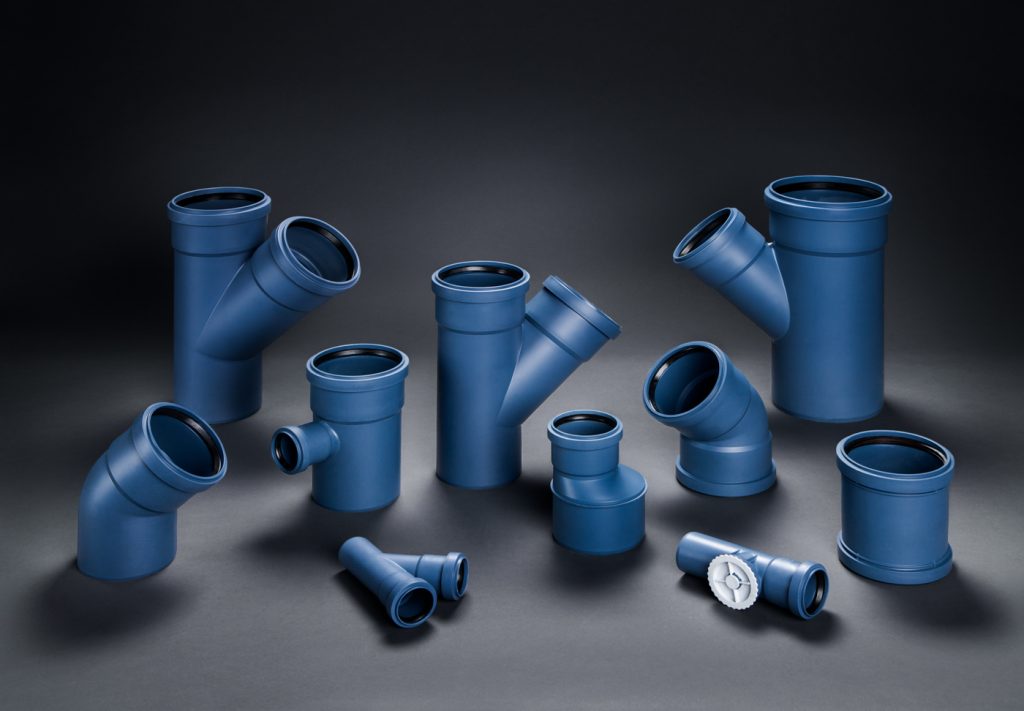
Which standard applies to PP drainage pipes?
PP systems are manufactured in accordance with the UNE EN 1451 standard for plastic piping and wastewater drainage inside the structure of buildings. These systems are particularly suitable for the disposal of domestic wastewater in dwellings and public buildings at particular risk from fire, while taking advantage of the benefits provided by sound-absorbing systems.
What is annular stiffness?
The annular stiffness is the resistance to crushing of a pipe or fitting under an external mechanical load with radial effect – condition defined in the UNE-EN-ISO 9969 standard.
In a sewerage network without internal pressure, the pipes are subjected to external loads due to trench backfill material, moving traffic loads, etc. These loads cause the pipe to tend to deform, resulting in compressive stresses on the inside of the pipe and tensile stresses on the outside of the pipe, which must be supported by the pipe structure.
While in PVC pipes the annular stiffness is standard (SN 4), in PP pipes the formulation of its intermediate layer has been improved, giving it a higher stiffness (SN>6).
In addition, PP sewerage pipes have an elastic jointing system, which makes them more rigid than PVC welded joints. In the case of PVC, expansion sleeves are necessary, as the glued joints may break. On the other hand, PP does not, as the tube cups absorb the expansion of the system.
What does the code B and BD mean on an evacuation pipe?
This code corresponds to the classification given to drainpipes by the regulations according to their application:
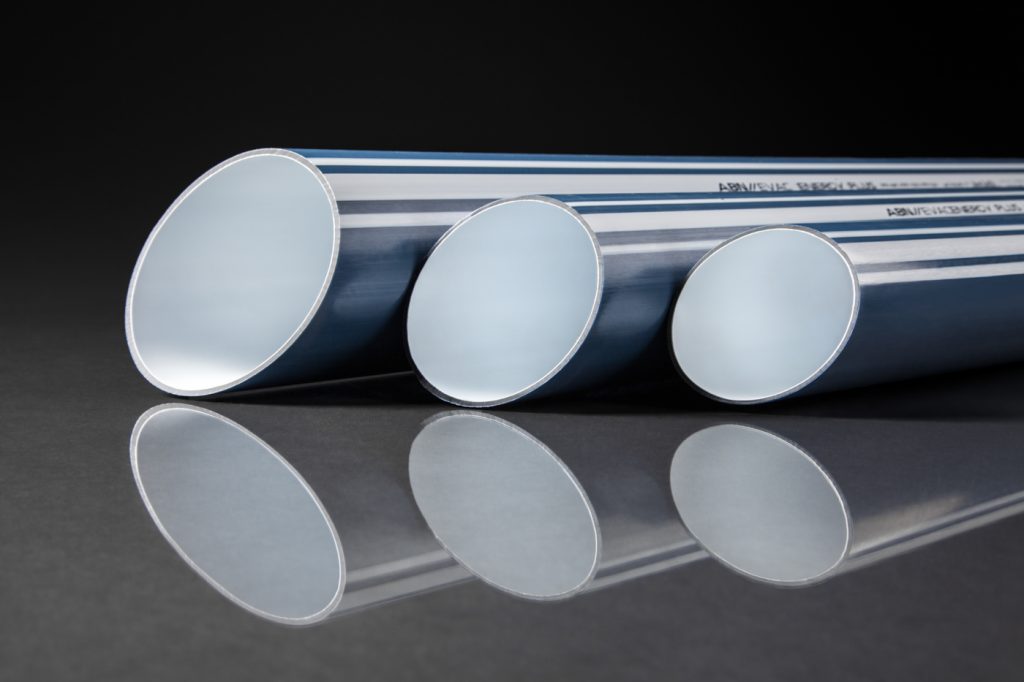
- Series B: Pipes and fittings installed on slabs or vertical surfaces inside buildings (internal network and downpipes).
- Series D: Pipes buried within and up to 1 metre from the ground projection of the building, to be connected to the sewerage system.
- BD Series: Tubes and fittings that can be used interchangeably in any of the above applications.
What does it mean for a pipe to be halogen-free?
Safety in installations and constructions is a constant concern, especially when dealing with materials exposed to possible fires. In this regard, understanding what it means for a pipe to be halogen-free is essential.
The halogens are some elements of group VII A of the periodic table: Fluorine, Chlorine, Bromine, Tene and Iodine. All of them are so reactive that they are not found free in nature, but always mixed with other elements.
The result of the combustion of halogen materials is a large amount of corrosive, toxic and opaque fumes.
Halogen-free pipes do not contain any of these elements and behave much better in case of fire than PVC (which contains chlorine) and have very similar mechanical characteristics. This is why halogen-free pipes are known as high fire safety pipes.
What is soundproof evacuation?
Most complaints about noise in buildings stem from problems with the soundproofing of downpipes for water drainage.
En España, el artículo 14 del Documento Básico HR (Protección frente al ruido) del Código Técnico de la Edificación (CTE) advierte que “con la finalidad de limitar el riesgo de molestias a los usuarios de las viviendas, los elementos de las instalaciones reducirán la emisión de ruidos durante su funcionamiento, afectando tanto a la obra nueva como a la obra de rehabilitación y reforma”. Furthermore, for a dwelling, hospital or educational centre, the Basic Document HR of the CTE allows a maximum of 45 dB in the enclosure.
Sound-insulated drainage pipes have been specifically designed to solve fluid drainage problems in pipe networks with the highest demands on noise reduction. A proper soundproof exhaust system is necessary to achieve the acoustic comfort that people demand.
Taking into account the above-mentioned figure, the noise values emitted by soundproof drainage systems are well below the maximum permitted by the CTE, which guarantees a high level of comfort in dwellings and a significant reduction in the nuisance caused by the drainage of fluids.
Method of joining polypropylene sewage pipes
Many pipes on the market still use threaded joints, welded or mechanical joints, techniques which, although they have been really useful and functional, have been relegated to the past. The specialisation of materials has allowed the new PP pipes to use elastic joints that are key to water tightness. An extra-long socket and a specially designed gasket make the resulting joint totally watertight and reliable, guaranteeing the perfect operation of the network even with depressions of 0.5 bar and deformations of over 30%.
This combination of length and material optimises the performance of the pipes. Some of the advantages of the elastic joint over previous technologies are:
- Avoids dirt deposits in the joint area and requires little application and relieving effort due to its starting angle.
- It is airtight and elastic in case of angle deviation or deformation of the pipe, so it has a higher protection against deformation.
- The elastic seals have a precise leakage profile, which facilitates the insertion of the pipe and prevents the lip seal from loosening.
- It offers increased optimisation of the outer seal area, thereby providing a clear improvement in surface pressure and angle variation in the cup.
Environmental certifications for drainage pipes
To ensure sustainability and low environmental impact, internationally recognised environmental product certifications are also applicable to this type of pipes, such as:
- Cradle to Cradle (C2C): It is a comprehensive solution to assess, optimise and verify all aspects of product design and manufacturing by evaluating the safety, circularity and accountability of products. This label boosts product innovation for the circular economy by providing a framework for designing materials and products that are safe, circular and responsibly manufactured.
- Environmental Product Declaration (EPD):. This is a document that provides quantifiable and verifiable information on the environmental impact of a product, as well as technical data on its manufacture, offering the customer truthful and verified information.
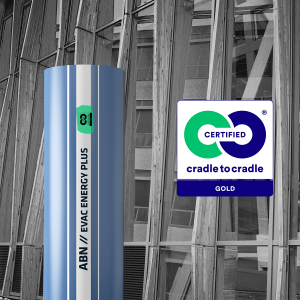
In addition, these certifications score against the standards of important product labels that also clarify environmental impact, promoting the use of lower impact materials. The best environmental seals for certifying sustainability are BREEAM and LEED. Houses and buildings built according to Passvivahus standards reduce heating and cooling needs by 75%, and the remaining energy can easily be covered by renewable energies.
Polypropylene pipes: an efficient solution for drainage networks
By embracing innovative technologies, we are building a cleaner, safer and more resilient future for our cities and communities. The correct choice and maintenance of drainage pipes allows for the removal and transport of wastewater, avoiding its accumulation and preventing possible public health problems affecting urban wellbeing.
The use of eco-friendly solutions for pipe construction, such as polypropylene pipes, contributes to environmental protection and the comfort of communities. The versatility and efficiency of this material have positioned it as a benchmark in the field of urban infrastructures in a world increasingly committed to sustainability.
